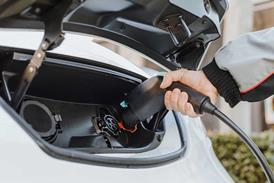We saw this published by our friends at Emissions Analytics and have received permission to re-publish it here.
Reusing, recycling, repairing and sharing are defining hallmarks of a circular economy idea that is being promoted worldwide, but especially in Europe. It is not surprising that Europe leads the way, not through altruism, but for good economic reasons, as many key materials for a growing economy become scarce or expensive. Europe lacks deposits of many of them, but also makes it uneconomic to extract or refine them for industrial use.
But while resource reuse is logically and economically plausible, other aspects of environmental policy are circular in a less attractive way. Especially since Dieselgate, arguments between different shades of opinion as to the future of battery electric vehicles (BEVs) and internal combustion engines (ICEs) have become so raw, antagonised by ad hominem attacks.

Yet, there are rarely disagreements between the sides on the underlying facts:
- Everyone knows that carbon dioxide (CO2) emissions are affecting the climate
- And that no vehicle is truly zero emission
- That BEVs are highly energy efficient, but batteries have low energy density
- That ICEs have poor efficiency, but compensate with high energy density fuels
- That BEVs reduce lifetime CO2 by ~50%, but this varies greatly by location
- That full, non-plug-in hybrids reduce CO2 by up to 30%, but that isn’t enough
- That battery and motor materials are scarce and often located in risky places
- That processing materials take lots of energy and creates local pollution
- That renewable electricity is mostly intermittent, increasing its real cost
- That all vehicles create pollution, whether tyre wear or in their construction
So, if there is a broad based of factual agreement, why the emotionalised debate?
We would propose that reason is transport policy is suffering a bout of “a priorism.” Typically defined as the systematic refusal to count anything as evidence against the truth of a purportedly empirical statement. Put another way, the argumentation for electrical vehicles is, like a green economy, circular. By defining BEVs as zero-emission in the European fleet average carbon dioxide (CO2) regulations, the answer is being assumed in the question. Therefore, BEVs cannot – despite any evidence to the contrary – be anything other than zero-emission. Even though, by common consent, they aren’t really.
It’s a form of cognitive dissonance – the mental anguish that arises when two beliefs contradict one another. BEV advocates know rationally that there are emissions from the manufacture of their vehicles, yet maintain that they are zero emission, because that is how the regulation defines them. Such internal conflict leads to anxiety and, from there, calm, rational discussion become difficult. As a psychiatrist explained: “If competing values, beliefs, attitudes, etc are not resolved or integrated, it greatly inhibits the ability of groups to have constructive dialogue, making it difficult, if not impossible, to arrive at a satisfactory compromise.” With the heavy emotional investment in beliefs on all sides, positions have become entrenched.
Why go on about this? Firstly, decarbonisation is an extremely important issue now, with global temperatures rising. Second, we need be sure that products that promise CO2 reduction do deliver in practice. Third, selfishly, Emissions Analytics aims to bring about a better understanding of real-world emissions through independent testing, to inform better policy and decision-making. While we are snagged on a logical fallacy, however, no amount of real-world testing is going to help move the debate forward. As Just Stop Oil protestors are literally stuck, we are stuck in an argumentative loop.
Defining BEVs as zero-emission was no accident by authorities. A further deliberate act has been not to designate other technologies such as renewable or synthetic fuels as zero-emission in any circumstances. Even if an innovative liquid fuel were created by green electricity and sequestering CO2 from the air, it would still create CO2 when burnt in the vehicle, and so would, officially, be as bad as the equivalent fossil fuel. By ignoring upstream emissions, BEVs get a double benefit: the upstream negative emissions of alternative fuels are ignored just as the upstream positive emissions of BEVs are.
To the argument that incorporating anything outside the official certification test in emissions targets is too difficult, consider the credit given to ‘eco-innovations’. Under the current European certification regime, eco-innovations are novel technologies that produce real-world CO2 reductions beyond what is measured on the certification cycle.
Each eco-innovation must prove its efficacy through a test programme, following technical guidelines from the European Commission. There are also various qualifying rules, such that the benefit should be at least 1 g/km, the technology should contribute only to the safety or performance rather than the comfort of the vehicle, and must not depend on driver behaviour. In short, the European Commission has designed and legislated for a system that complements the core CO2 targets, where real-world benefit can be proven. Under the eco-innovation rules, the maximum benefit a vehicle could be given was 7 g/km in its type approval CO2. Synthetic fuels, theoretically, could achieve up to 100% reduction in CO2, yet there is no equivalent system to recognise their value. The best we have so far is that the Commission has been mandated to prepare a report on the possibilities by 2026. These fuels are, it should be noted, being pushed through the renewable fuels directives, which does foster the industry to some extent, but it does not help manufacturers meet their fleet CO2 targets, so makes no difference to the incentives to produce and sell BEVs.
Therefore, we can conclude the absence of a mechanism to credit or punish upstream emissions is a choice by governments and regulators. So long as this is the case, there is no technology that can compete with BEVs except hydrogen. In fact, a hydrogen fuel cell vehicle powered by ‘grey’ hydrogen – hydrogen created from natural gas using steam methane reformation without capturing the greenhouse gases made in the process – would be counted as zero-emission, while a synthetic fuel created with clean electricity and sequestering CO2 from the air would be as bad as a fossil fuel, despite the former being very dirty and the latter clean. This is clearly not an effective or honest route to maximum CO2 reduction, but that is the choice being made.
It is important to strike a note of caution about alternative fuels, however. Creating synthetic fuels is highly energy intensive and so cannot be scaled to make a sufficiently big difference until we have plentiful, cheap low-carbon electricity. Fuels made from renewable feedstocks such a used cooking oil to create replacement diesel such as hydrogenated vegetable oil (HVO) are subject to limited supply of the feedstock, as well as the conversion also requiring energy.
The optimal approach would be to offer an allowance for these fuels in the fleet-average targets, but subject to two important tests. First, provenance would need to be verified to make sure what was being sold was genuine – with the pressure on feedstocks, fraud is a real possibility. Second, the chemical composition of the feedstocks may lead to new or increased tailpipe emissions. This is where Emissions Analytics has been developing cutting-edge techniques using two-dimensional gas chromatography and time-of-flight mass spectrometry. This allows the almost complete chemical profiling of both the fuels and the exhaust gases produced.

A fuel fingerprint is shown in the chromatogram above. In short, the plot depicts hundreds of distinct organic compounds, separated in two dimensions, approximately to the molecule size and electrical charge. The intensity of the colour represents the prevalence of the compound. Taking HVO, as an example, any fuel sample can be compared to a reference HVO fingerprint. In a recent project, four different HVO products were purchased in the marketplace and subjected to this fingerprinting. Three of these matched well, with an average of 342 organic compounds, of which just 0.1% were aromatics (often carcinogenic) and 0.8% oxygenated (containing oxygen atoms). One of the fuels deviated significantly, with 522 compounds, of which 13.2% were aromatics and 14 oxygenated. The dissonant sample was shown to match standard B7 diesel closely, which led to the conclusion that standard diesel with little or no HVO added was being passed off as HVO to customers.
Burnt in the engine, these fuels of different chemical composition may well lead to different exhaust emissions, and some of those emissions might not be regulated. For example, when E10 gasoline was introduced, the concern was that the oxygenates from the added ethanol would lead to more acetaldehyde emissions, which are not directly covered by the Euro regulations. Emissions Analytics’ on-road testing can measure individual species of volatile organic compounds (VOCs) at the tailpipe, for example its EQUA programme shows that the average formaldehyde emissions from standard diesel is 0.32 mg/km.
As this demonstrates, it is possible to validate the low-emission credentials of these fuels, and so there is no reason not to incorporate them into the CO2 target system and Euro 7 pollutant emissions limits. The latter would require only a small step beyond the current proposal in order specifically to target species such as formaldehyde and acetaldehyde from light-duty vehicles.
While the European Commission considers its 2026 renewable fuels report, BEVs will continue to enjoy a legislated advantage. In many respects they are excellent products: quiet, high torque and cheaper to operate, especially for city dwellers. Their market share will likely continue to grow, and would probably even continue to grow without the current lavish subsidies, as some car buyers value them highly. hey do not, however, suit many real-world needs, or suit them as well as ICE vehicles; and they are definitely not zero-emission, whether for lifecycle CO2 or tyre wear emissions. Yet, when governments perform their Net Zero calculus, there is only one powertrain realistically available as the solution. BEVs will always win. But that is not a surprise – the answer was in the question.
Until the question is corrected, we will continue to live in an anxiety-inducing state of cognitive dissonance. Maybe this suits certain interested parties, as the different sides slug it out, with no prospect of changing the result. But maybe a more effective, healthier, happier approach would be to consider properly the real-world emissions of the various decarbonisation options and to unleash competition and innovation. A corollary of that would be that we would realise that there are no zero-emission options currently, and there will never be until the grid is decarbonised and expanded. Instead, we could have a sensible discussion about accelerating wind, solar, nuclear and any other available, scalable alternatives, to clean the grid as soon as possible.
Until then, we can perhaps best summarise this situation by cannibalising Henry Ford’s statement that a customer, “…can have a car painted any colour that he [sic] wants so long as it is black.” So long as key materials are scare and expensive and the electricity grid remains dirty in most places, a multi-lane, multi-technology, multi-fuel approach would be more robust. We need every conceivable innovation to reduce greenhouse gas emissions. But what the current fleet targets mean is that you can have any vehicle you like, as long as it’s fully electric.

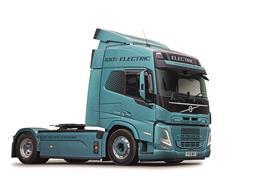

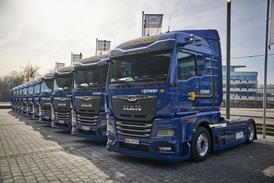







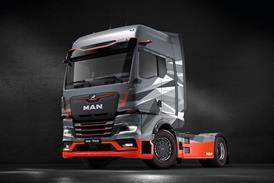
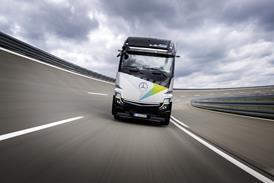

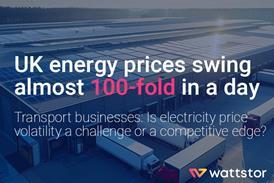
![Mercedes-Benz_eActros_600_(1)[1]](https://d2cohhpa0jt4tw.cloudfront.net/Pictures/274x183/8/1/8/17818_mercedesbenz_eactros_600_11_556244.jpg)

